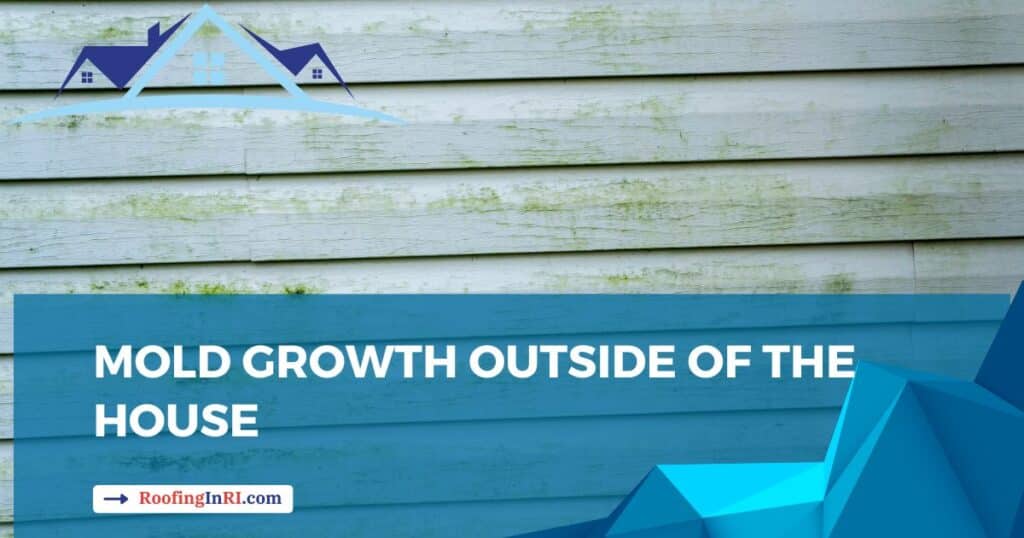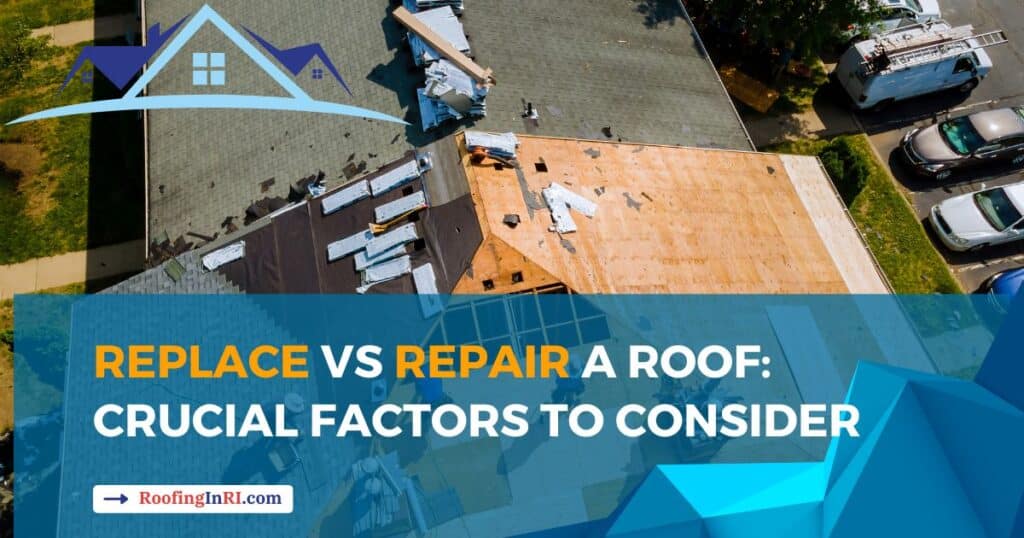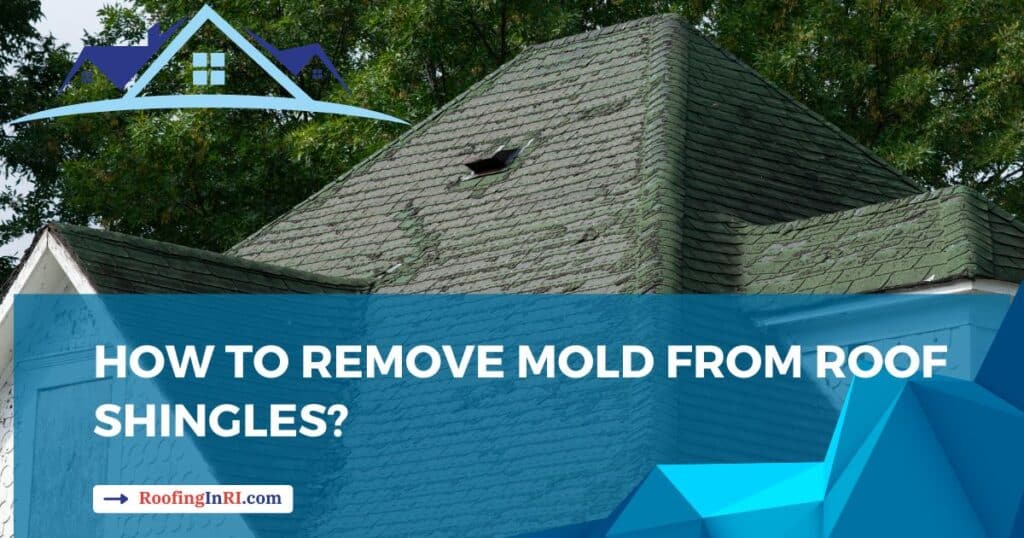As a homeowner in Rhode Island, where the weather can be humid and unpredictable, mold concerns are common. While mold inside the house is a well-known issue, there is often confusion about the potential dangers of mold outside the home.
Mold hidden under the home’s exterior siding can cause structural issues and health concerns. It can compromise the integrity of the siding, leading to deterioration and potential water damage. Additionally, airborne mold spores from the exterior can enter the indoor environment, posing health risks.
If you have a mold problem on the exterior, contact us at (401) 868-1313. Anyway, in this article, I want to help everyone, including those who live outside of our service coverage.
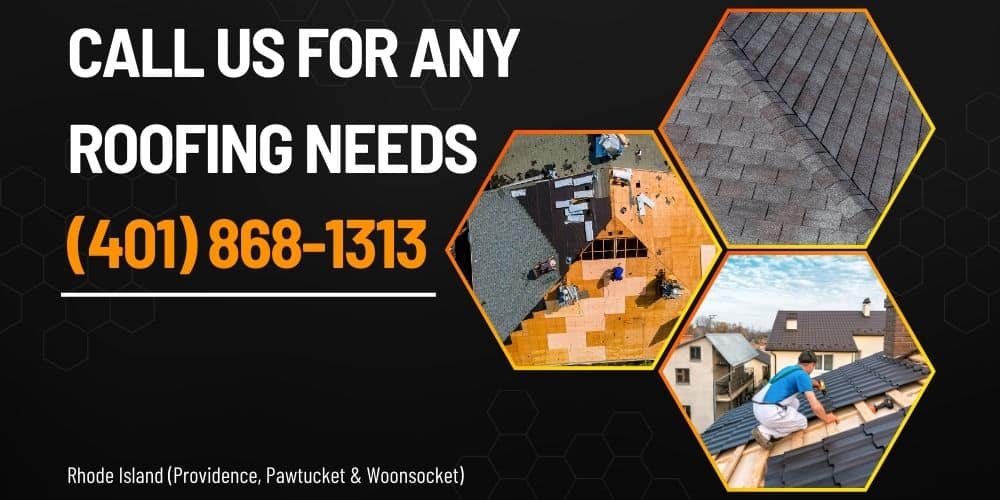
Let’s get started.
The top dangers of mold in your home
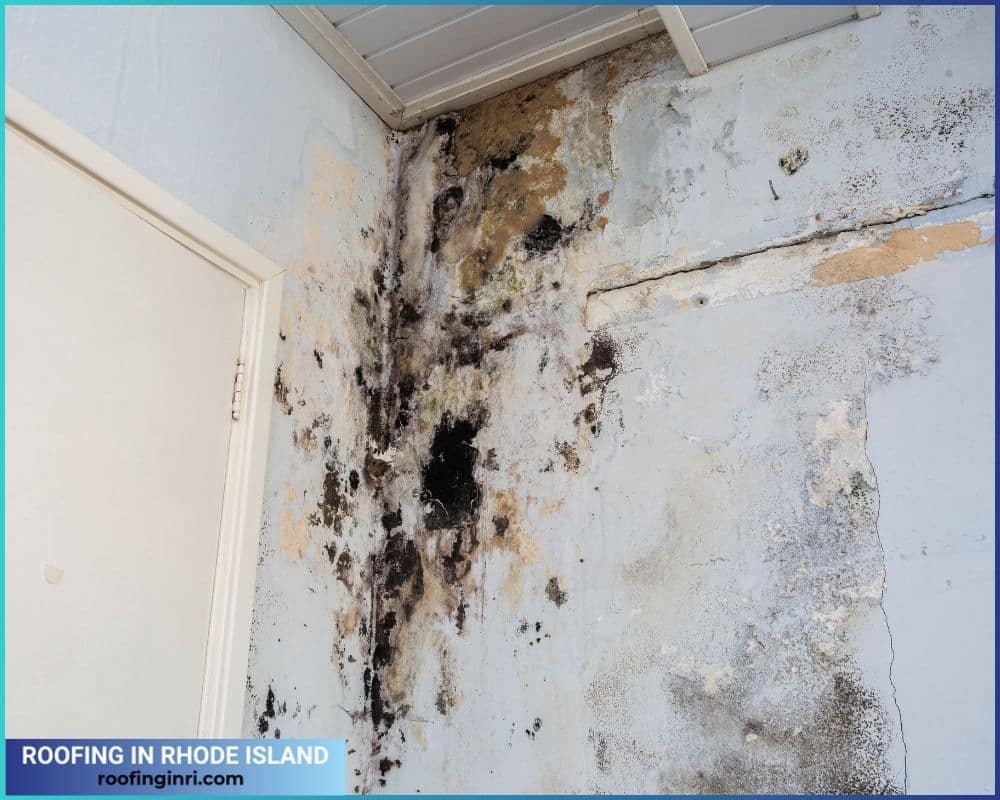
Allergies and sensitivities
Mold spores are potent allergens. Common symptoms include sneezing, coughing, throat irritation, and respiratory discomfort. Prolonged exposure may exacerbate existing conditions and contribute to developing respiratory infections.
Related: 10 essential tips for roof maintenance and repairs
Respiratory problems
Mold produces mycotoxins, which, when inhaled, can lead to respiratory problems. Prolonged exposure to indoor mold may contribute to the development of asthma or aggravate existing asthma symptoms. Individuals with respiratory conditions should be especially cautious about mold in their homes.
Read also: A guide to skylight insulation
Structural damage
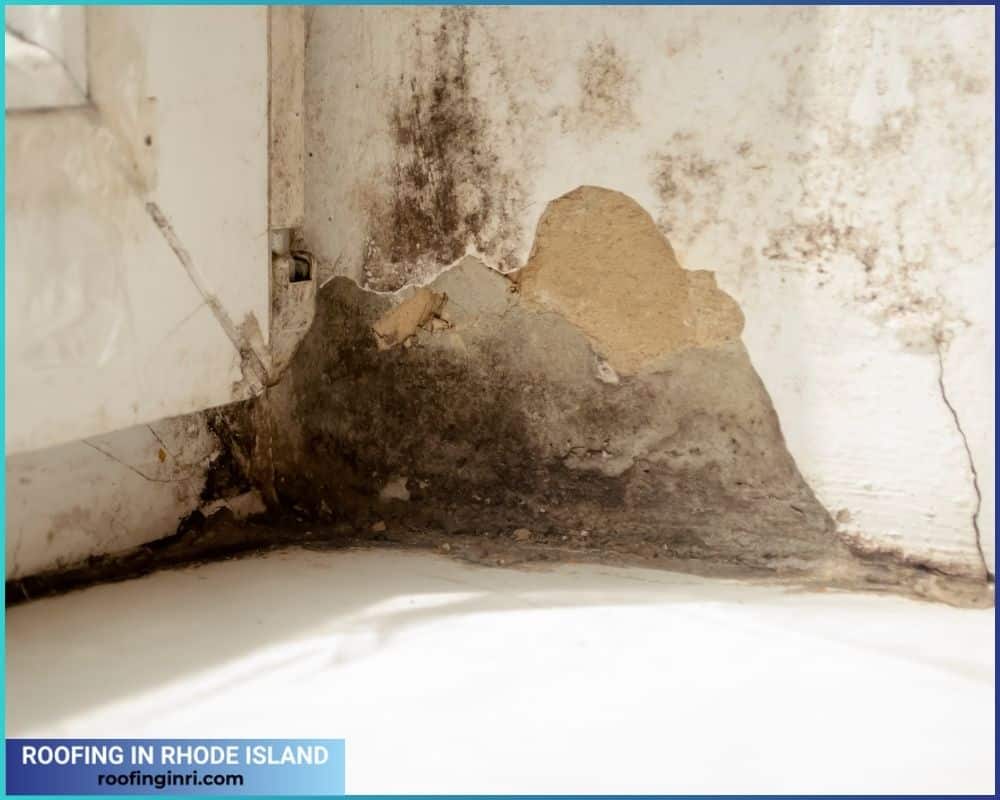
Mold has a destructive impact on building materials. When it comes to wood, drywall, and other porous surfaces, it can slowly cause damage and weaken the structural integrity of your home.
Over time, this damage can be extensive and costly to repair. Regular inspections and addressing moisture issues are vital to prevent structural harm.
Read also: Active and passive ventilation – which one is the best for your roof
Hidden mold and indoor air quality
Mold often thrives in hidden or hard-to-reach areas, such as behind walls or under flooring. This mold not only damages structures but also harms indoor air quality. Contaminated air can circulate throughout the house, leading to respiratory problems for occupants.
Read also: Top 10 signs of bad roofing contractors
Odor and unpleasant environment
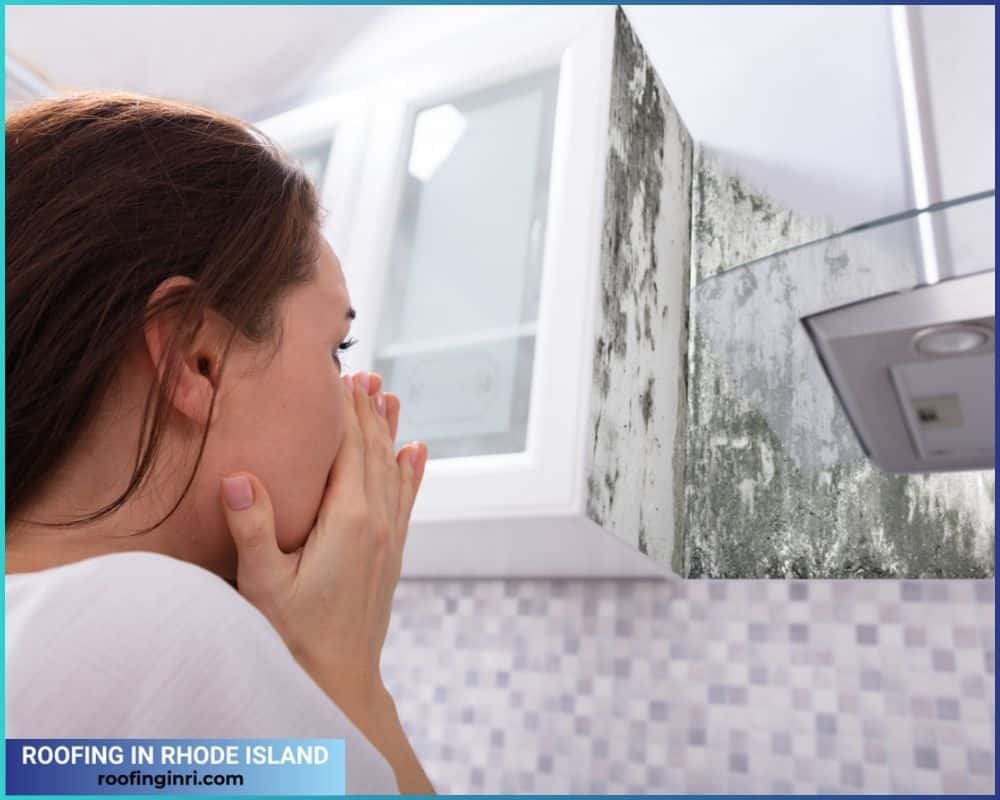
An unpleasant and musty smell typically accompanies the presence of mold. Beyond the health implications, the smell can make living spaces uncomfortable. Take remediation measures to ensure good health and a comfortable living environment.
Related: When is the best time to replace a roof?
Property devaluation
Mold issues can significantly impact the resale value of a property. Potential buyers are wary of homes with a history of mold problems due to the associated health risks and the potential for expensive repairs. Addressing mold is crucial to maintaining the value of your property.
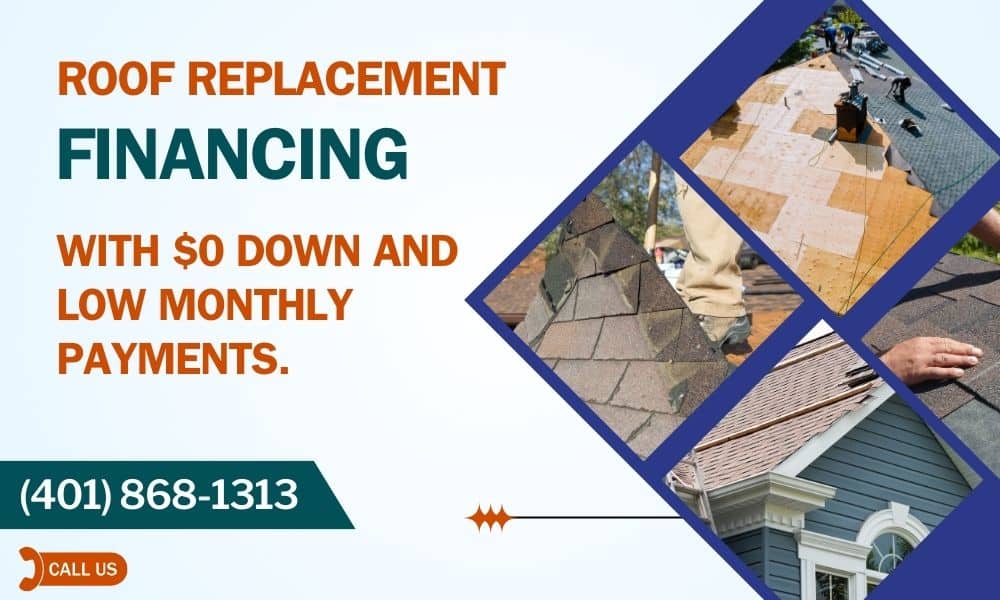
Related: Why do you need an ice and water shield on the roof?
Challenges in insurance coverage
It is important to note that specific insurance policies may not cover mold damage, mainly due to prolonged neglect or lack of maintenance. Understanding your insurance coverage and taking preventive measures to address water damage and mold growth can save you from financial burdens.
Related: 11 main reasons for denying roof insurance claims and solution
Why does mold grow?
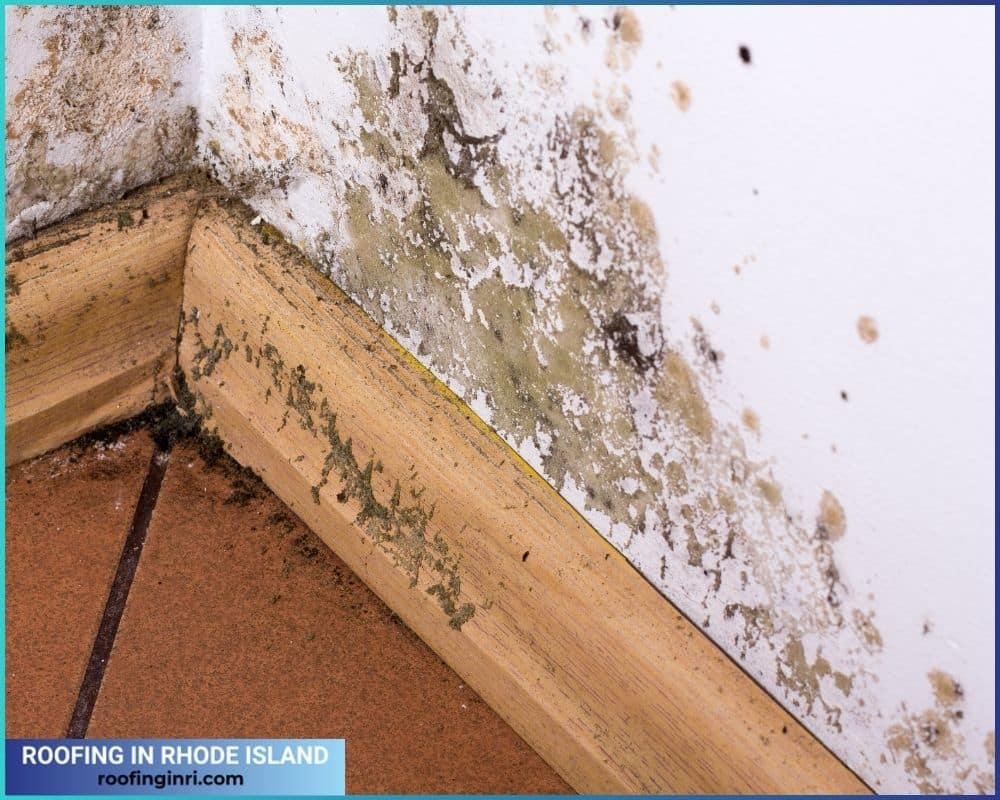
Mold is like a party-loving troublemaker, and for it to throw a wild party (grow), it needs three things – an excellent hangout spot (organic matter), a refreshing drink (moisture), and good vibes (suitable temperatures).
Firstly, let’s talk about the excellent hangout spot. Mold loves to chill on organic matter, anything from wood and paper to fabric and even dust. It’s the perfect spot to set up camp and start its shenanigans.
Now, onto the refreshing drink – moisture. Mold thrives in damp conditions. Whether it’s a leaky roof, a burst pipe, or just high humidity, mold gets its hydration from these situations and is ready to rock.
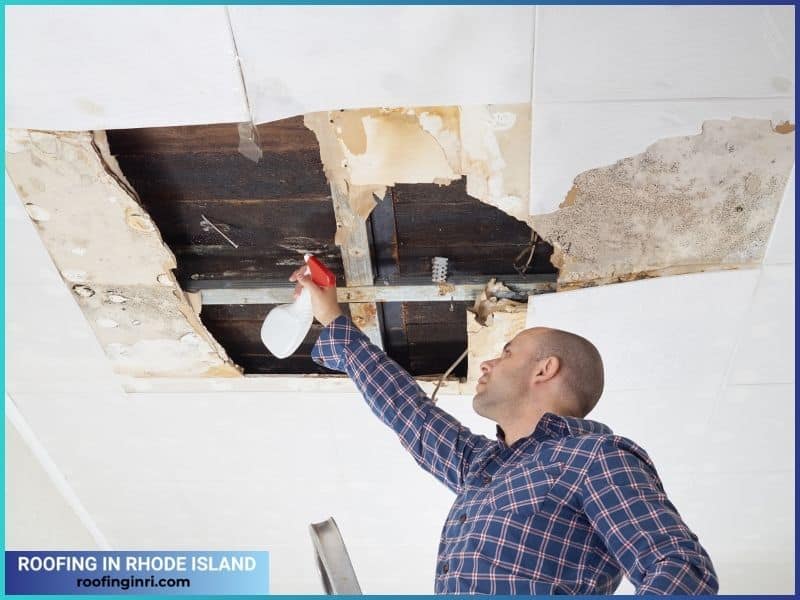
Lastly, good vibes in terms of suitable temperatures. Mold isn’t a fan of extreme cold or scorching heat. It likes it just right – not too hot, not too cold. Think of it as Goldilocks finding the perfect porridge. The temperature should be perfect for mold to start its party and grow.
So, in a nutshell, mold grows because it finds a cozy spot (organic matter), gets a drink (moisture), and enjoys the right temperature. To prevent mold from turning your place, you must control these factors – keep things dry, fix leaks, and ensure your home isn’t too humid. That way, you’ll be in control, not the mold!
Related: Will roofing companies offer financing for a new roof?
How does mold get under the siding?
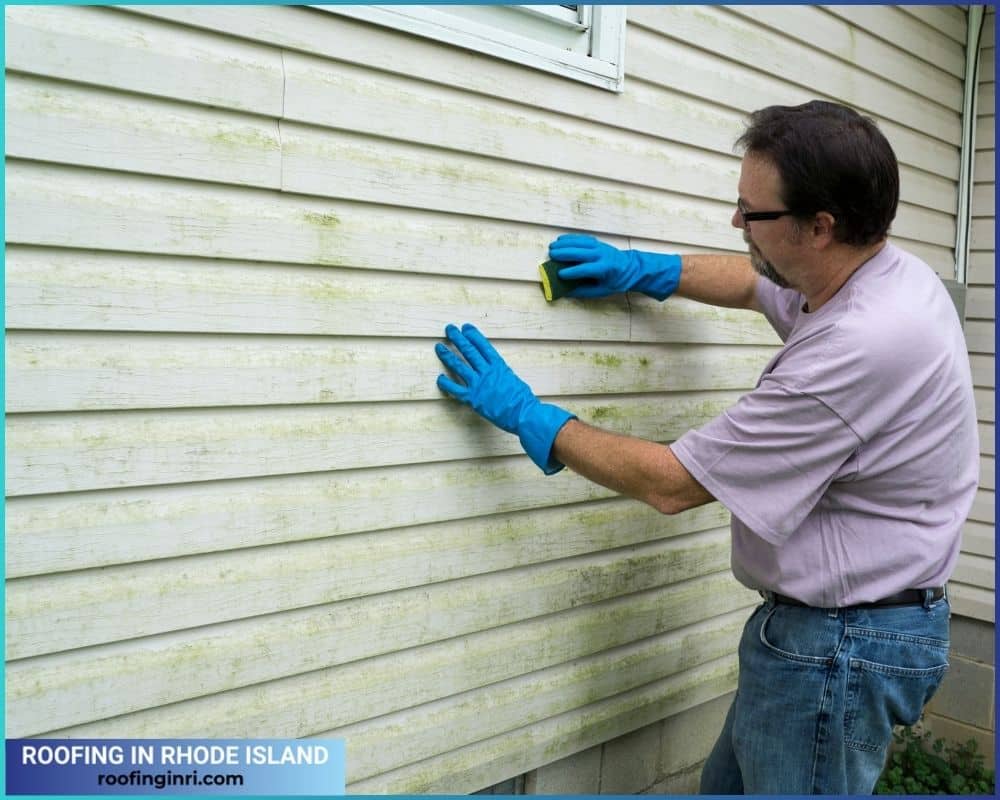
Mold can find its way under siding through various avenues, turning the cozy exterior of your home into an unexpected hiding spot. The primary culprit is moisture. Rain, snow, or high humidity can create an environment conducive to mold growth. Water can seep into the small gaps and crevices between the siding and the underlying structure, creating the perfect environment for mold growth.
Improper installation or damaged siding can exacerbate the issue. If the siding isn’t correctly sealed or there are cracks and gaps, water can easily penetrate, reaching the inner layers of your home. Once moisture is present, mold spores, naturally present in the environment, seize the opportunity to settle and multiply.

In addition to water infiltration, condensation can contribute to mold growth under siding. When there is a difference in temperature between the interior and exterior of your house, condensation can form behind the siding, leading to a damp environment for mold growth.
Read also: Energy-efficient roofs: What they are & what to look for
How to prevent mold growth?

Preventing mold growth is like keeping your room clean – you have to stay on top of things! First off, control moisture. Fix leaks ASAP, keep things dry, and use exhaust fans in damp areas like bathrooms.
Next, let your place breathe – good ventilation is key. Use fans and open windows to keep the air flowing.
Keep an eye on those dark, neglected corners – they’re like the hiding spots for mold.
Lastly, be a detective. Regularly inspect your place, especially after a rainy day, to catch any potential mold growth early. And remember, a clean, dry space is a mold-free space.
Read also: How to claim roofing insurance for storm damage?
Conclusion
Mold hidden under exterior siding poses structural and health risks, emphasizing the importance of prompt action.
From health risks and respiratory problems to structural damage and property devaluation, the impact of mold can be extensive. Insurance challenges further highlight the need for preventive actions, as specific policies may not cover mold damage.
I also explained how you can prevent mold growth. But if your home is already affected significantly, contact a professional.
Ready to elevate your home’s protection and curb appeal? Call us at (401) 868-1313 today for expert roofing solutions in Rhode Island (Providence, Pawtucket & Woonsocket) – because your roof deserves the best care it can get!


